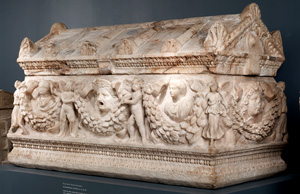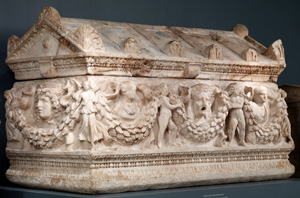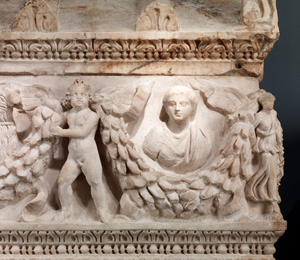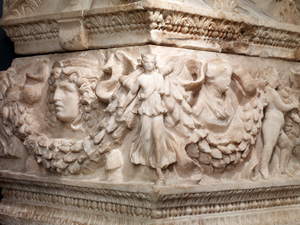Garland Sarcophagus
The Walters Art Museum, Baltimore
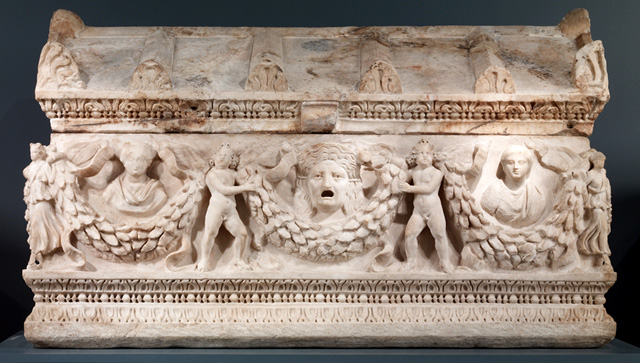
 Select the image to zoom
Select the image to zoom
Starting in the second century, Romans began to favor inhumation, or burial, rather than cremation, and the upper strata of Roman society could afford finely carved marble sarcophagi for their tombs. This sarcophagus, festooned with carved garlands, was likely made in Phrygia, a region of present-day Turkey, and then shipped to Rome, where it was used in the tomb of a wealthy Roman family. Scientific analysis of the marble places it in the Dokimeion quarries, and the artistic style is similar to other works known to be from that region. This example has several incomplete areas across all four faces of the exterior, suggesting that work was interrupted at an intermediary stage and that it might have been needed at shorter notice than expected; many other known examples have also been left unfinished, and it is often impossible to determine the reason. Many of the sarcophagi produced in the Roman Empire, and particularly those made in Asia Minor, have a lid shaped like a gabled roof. This architectural appearance might have been considered appropriate to house the dead, or it might have been intended to suggest a temple, presenting the deceased as a hero worthy of veneration. The garlands carved in stone represent the real swags of leaves and fruit that were used to adorn altars and tombs. Roman tombs often housed the remains of several generations and could be visited by family members, who would hold ceremonial meals and perform other rituals in the tombs at certain times of the year. The tomb complex in which the Garland Sarcophagus was found included large carved sarcophagi, small altars with cremated remains, and a number of carved portrait busts.
